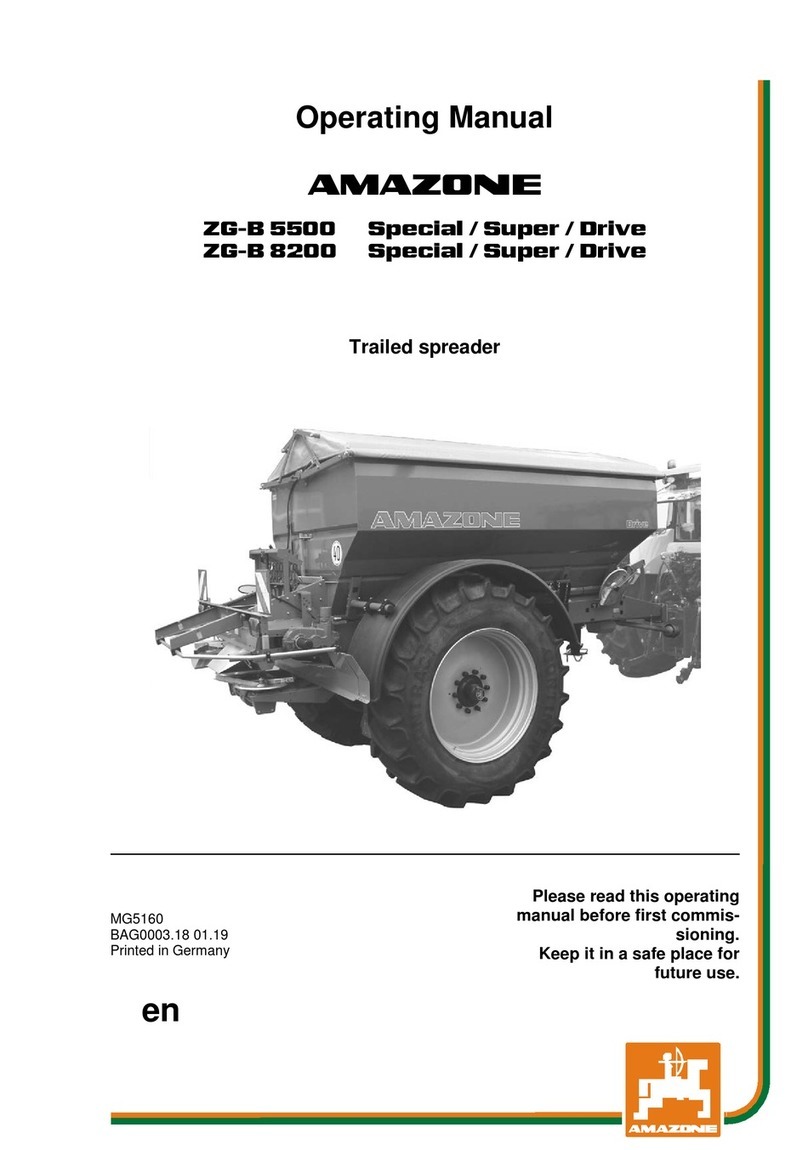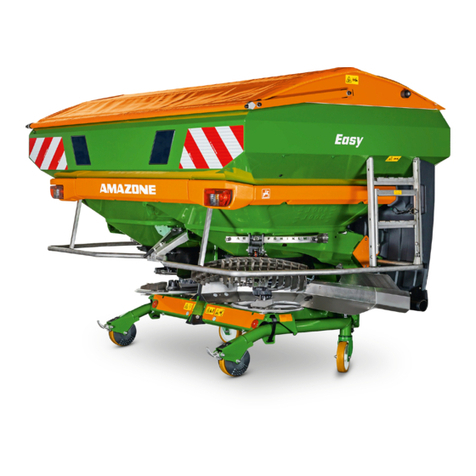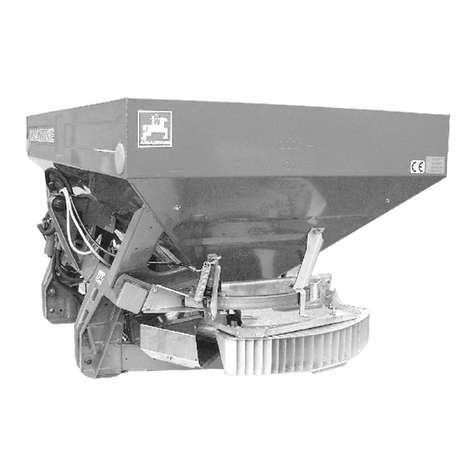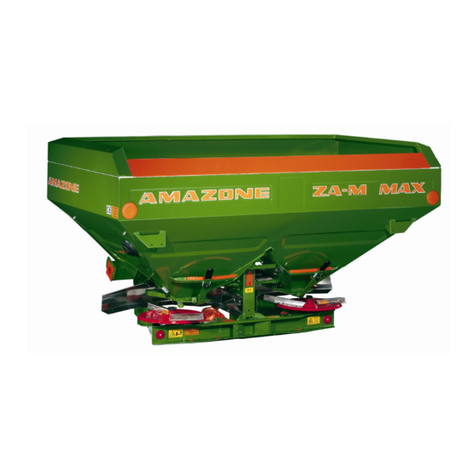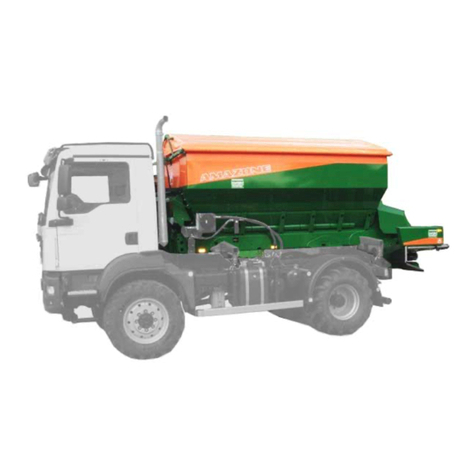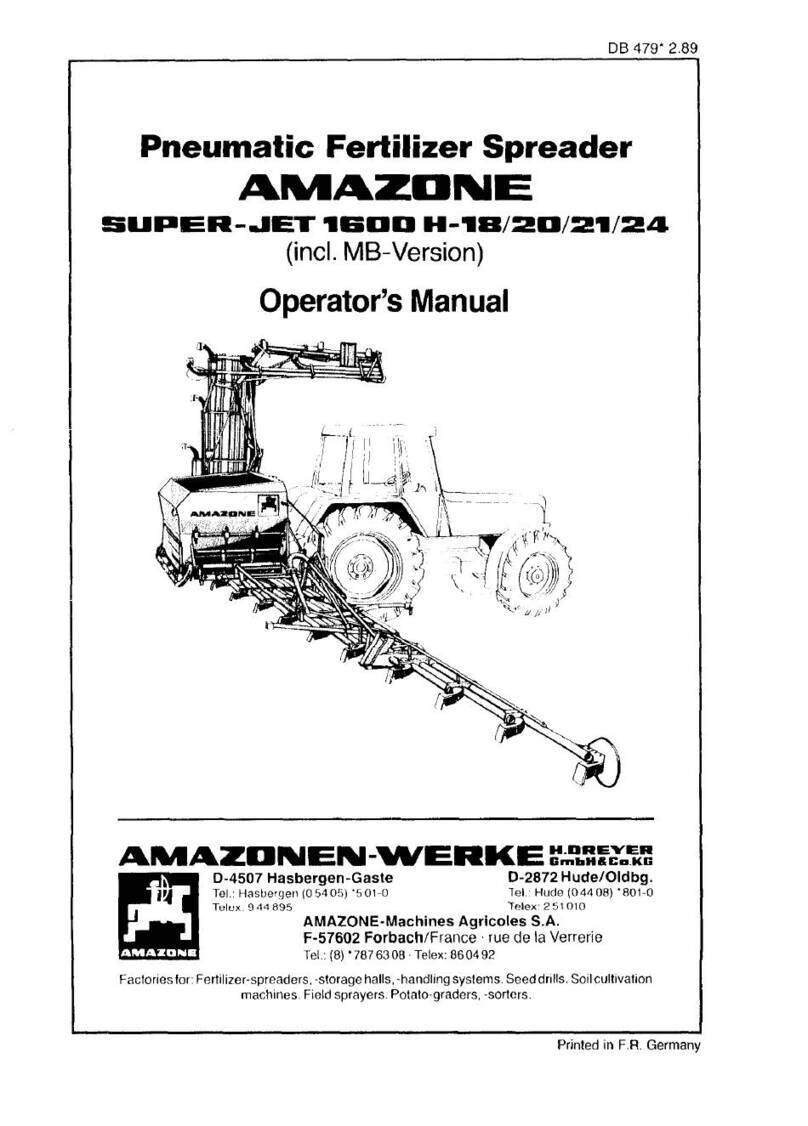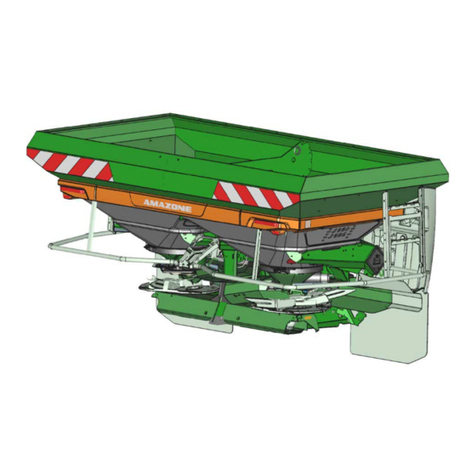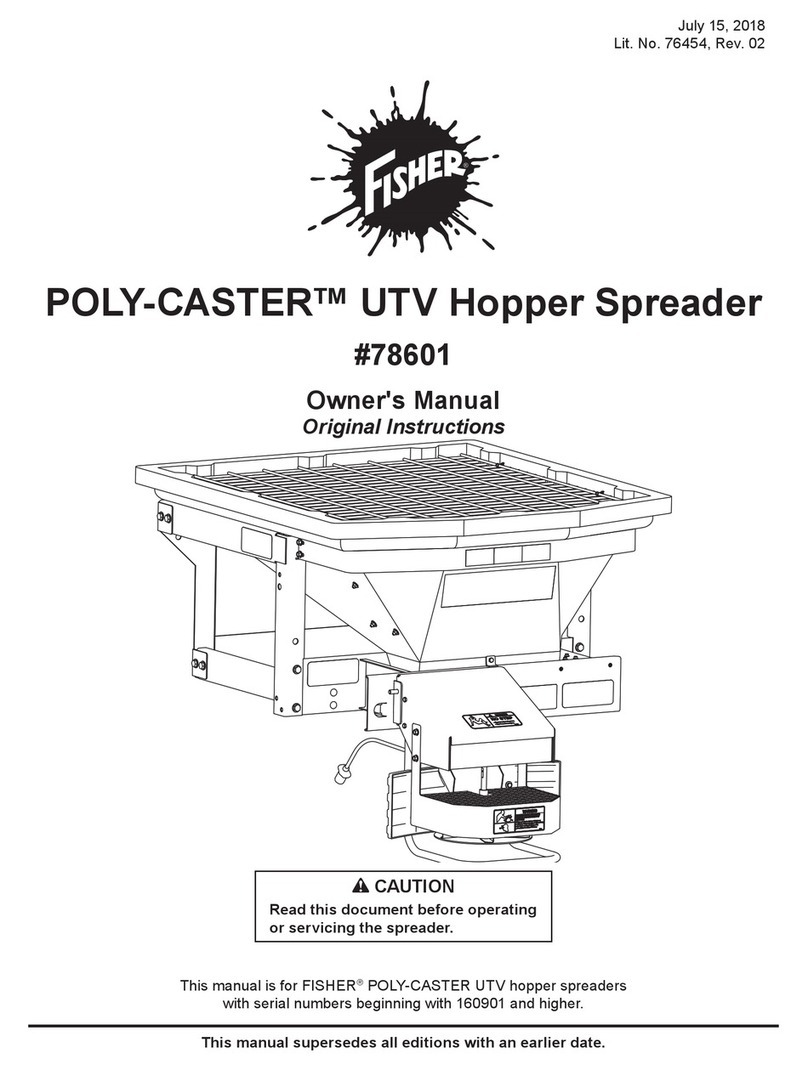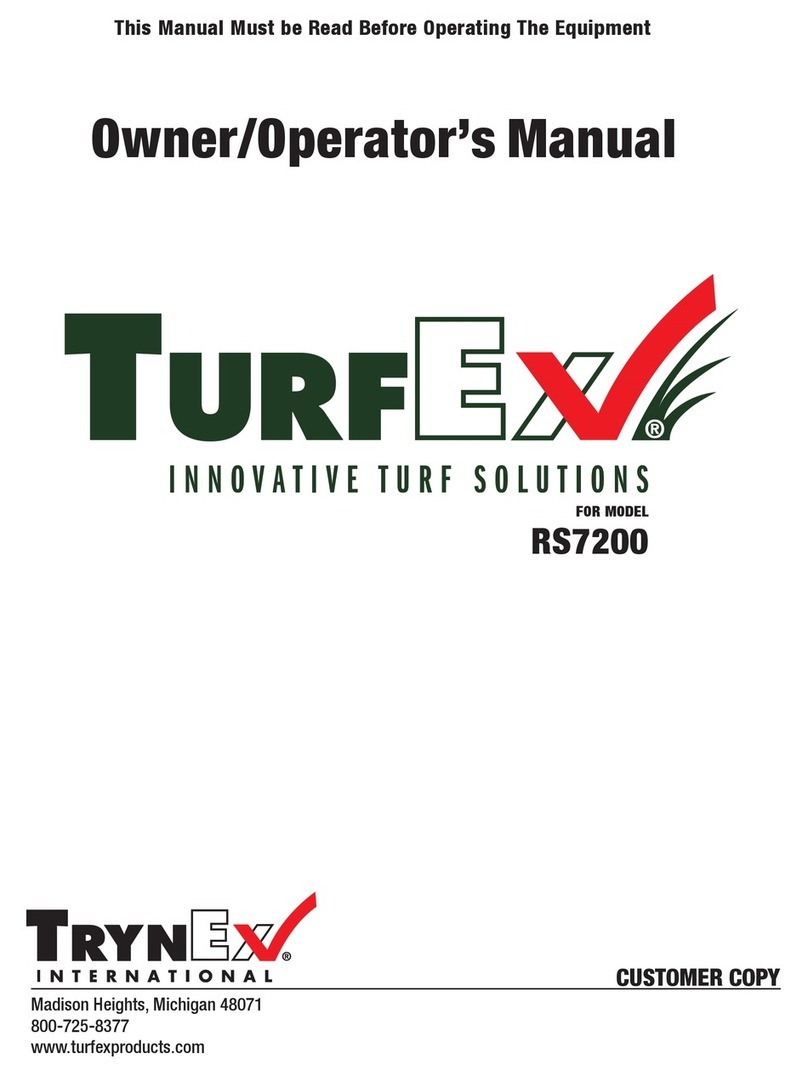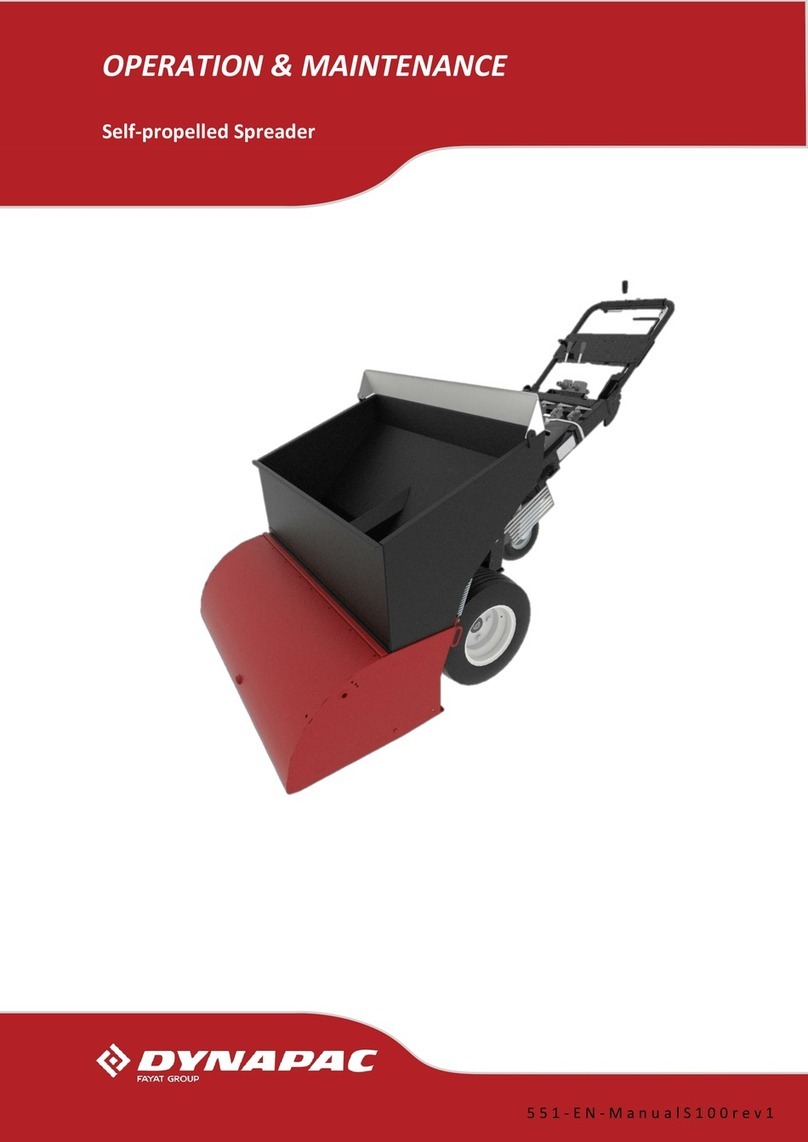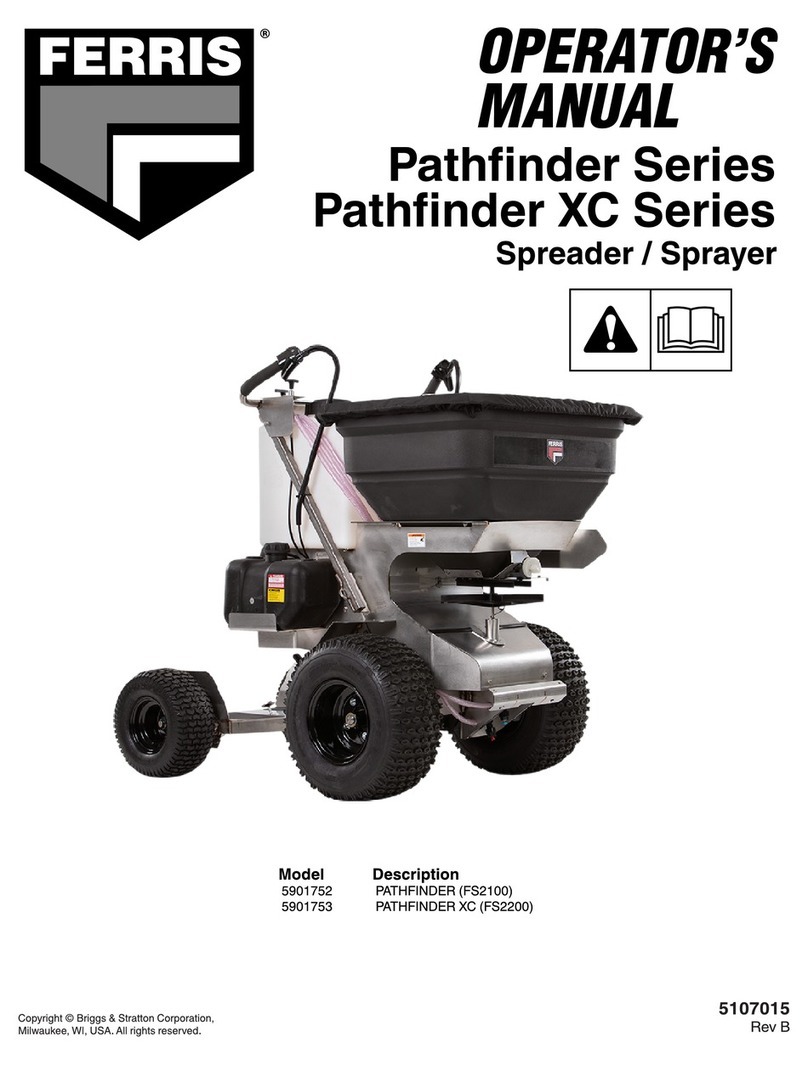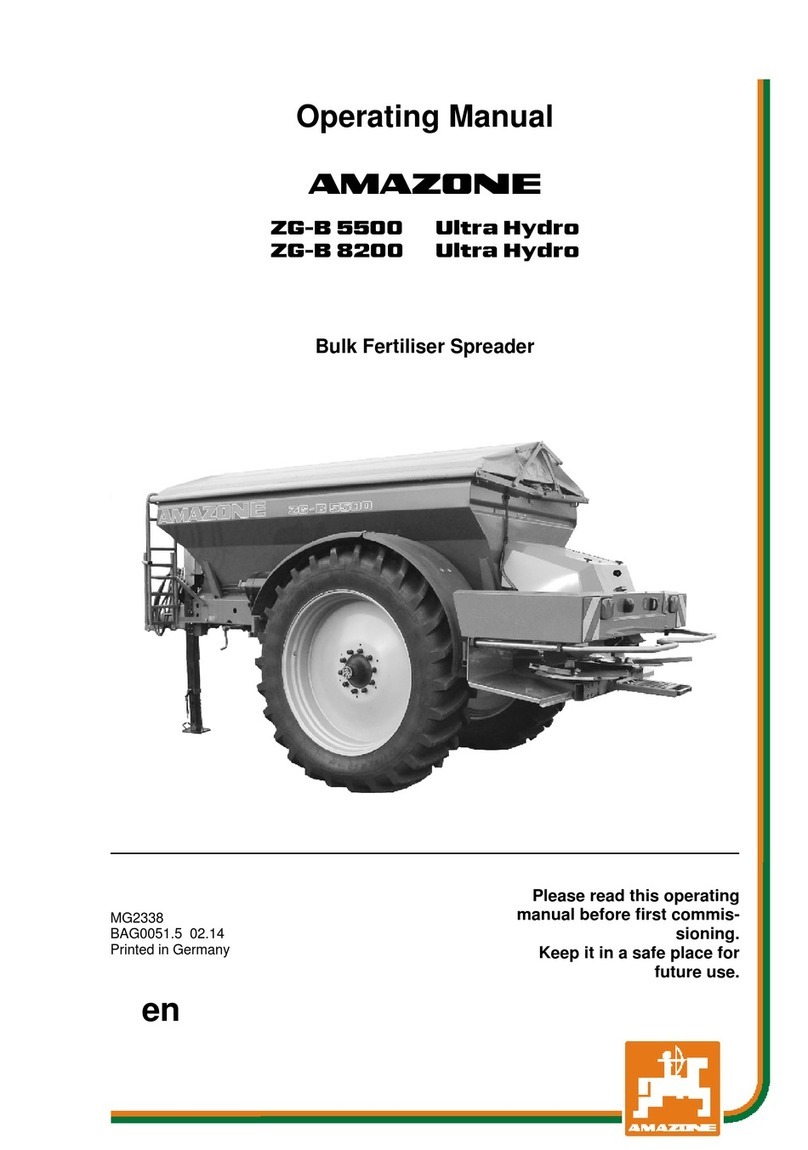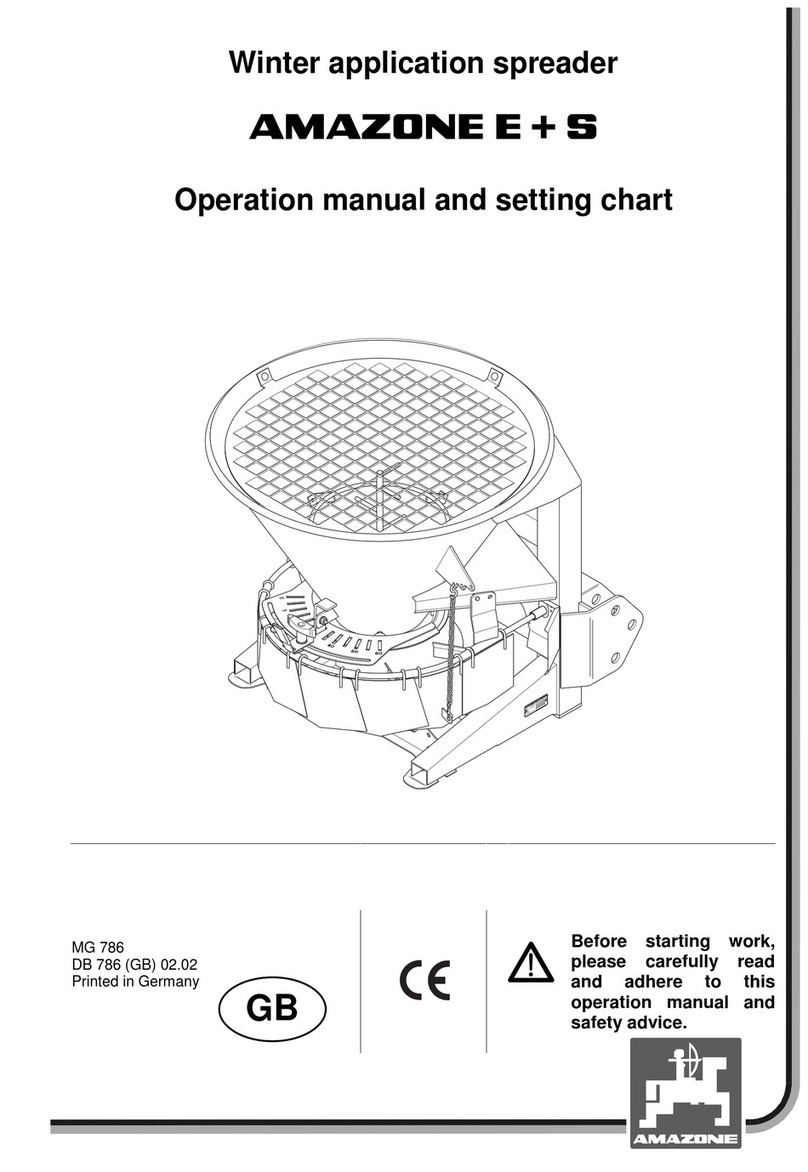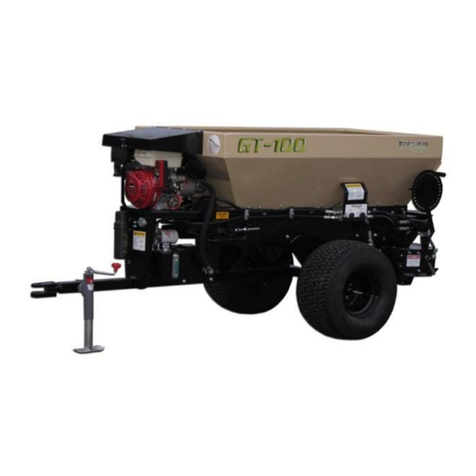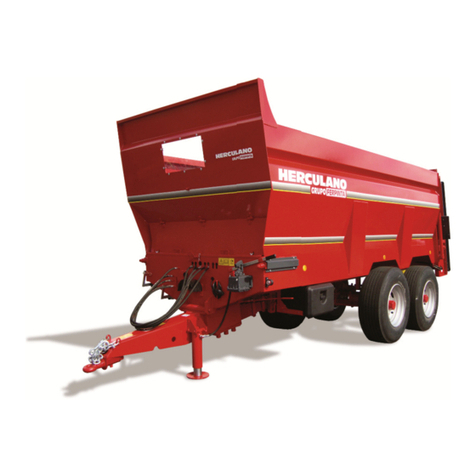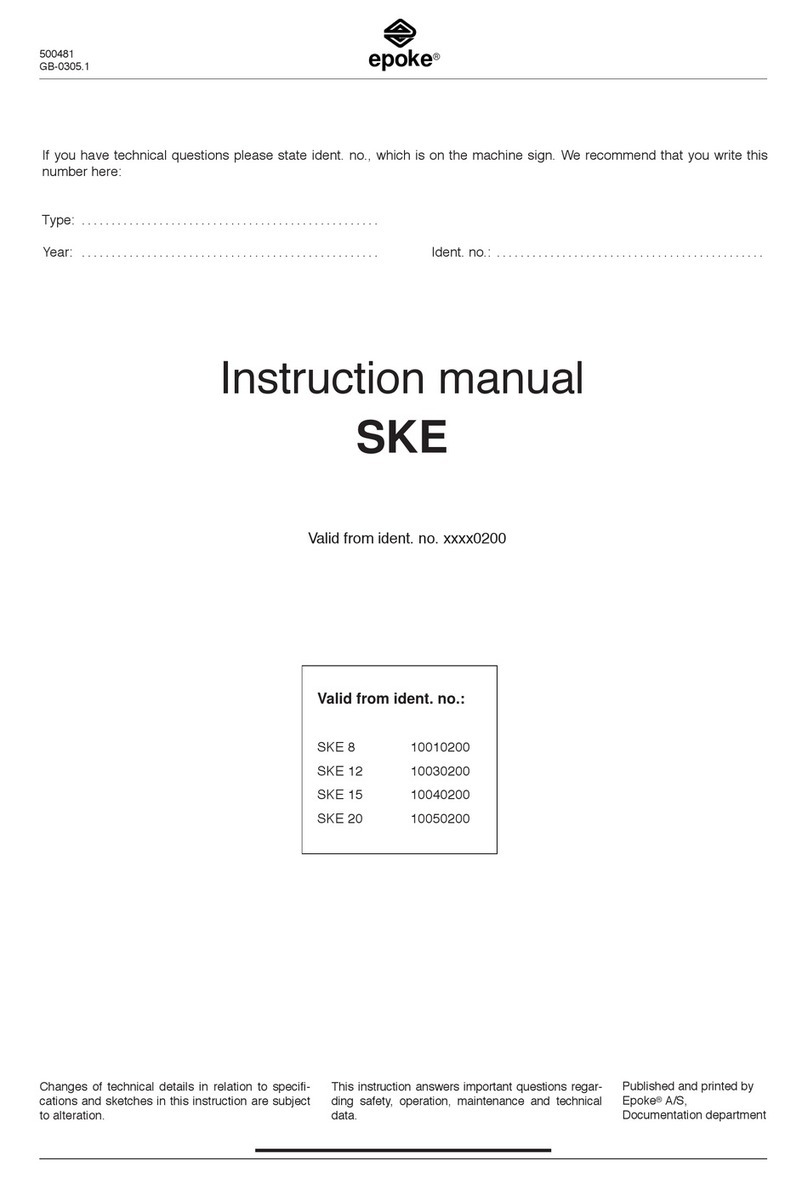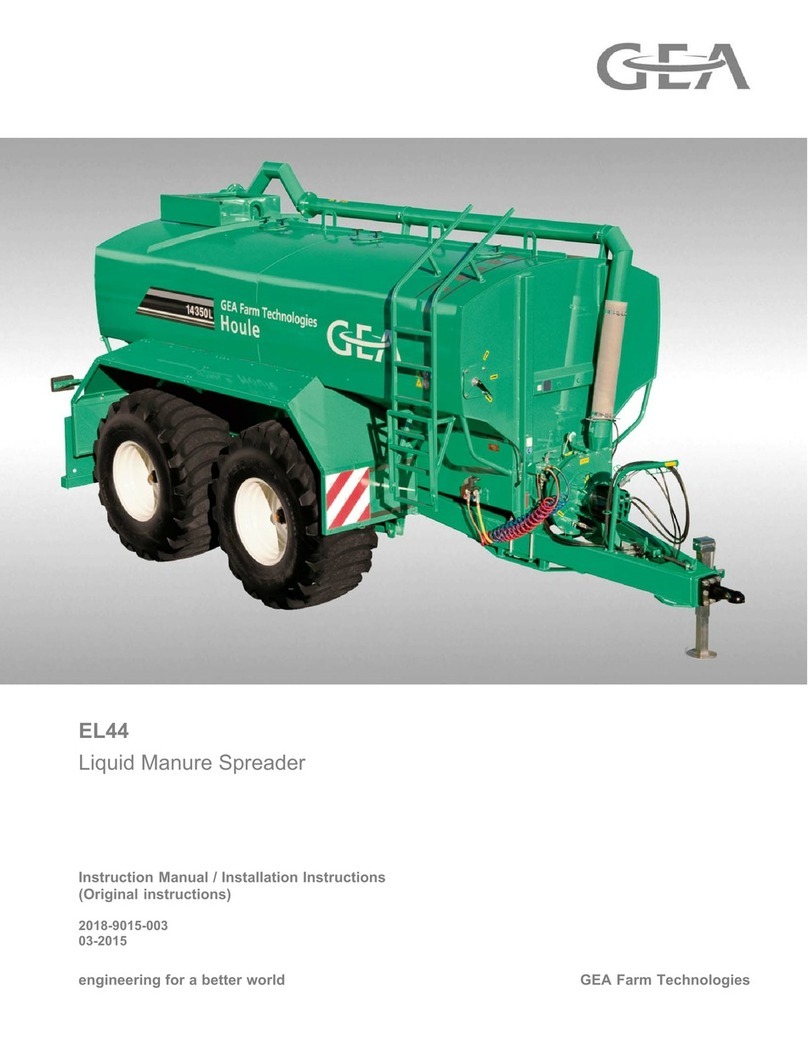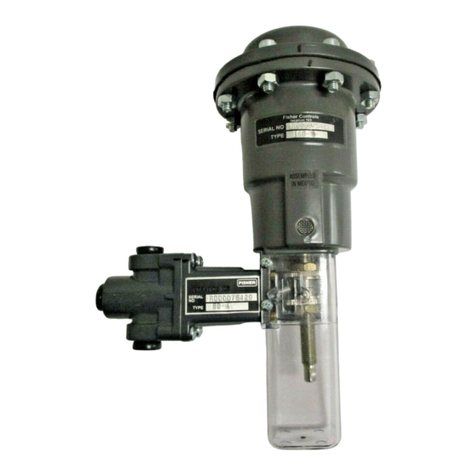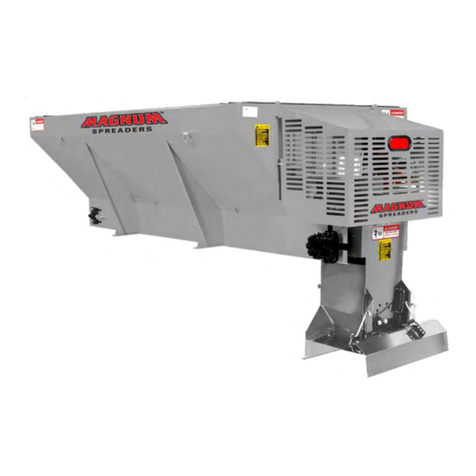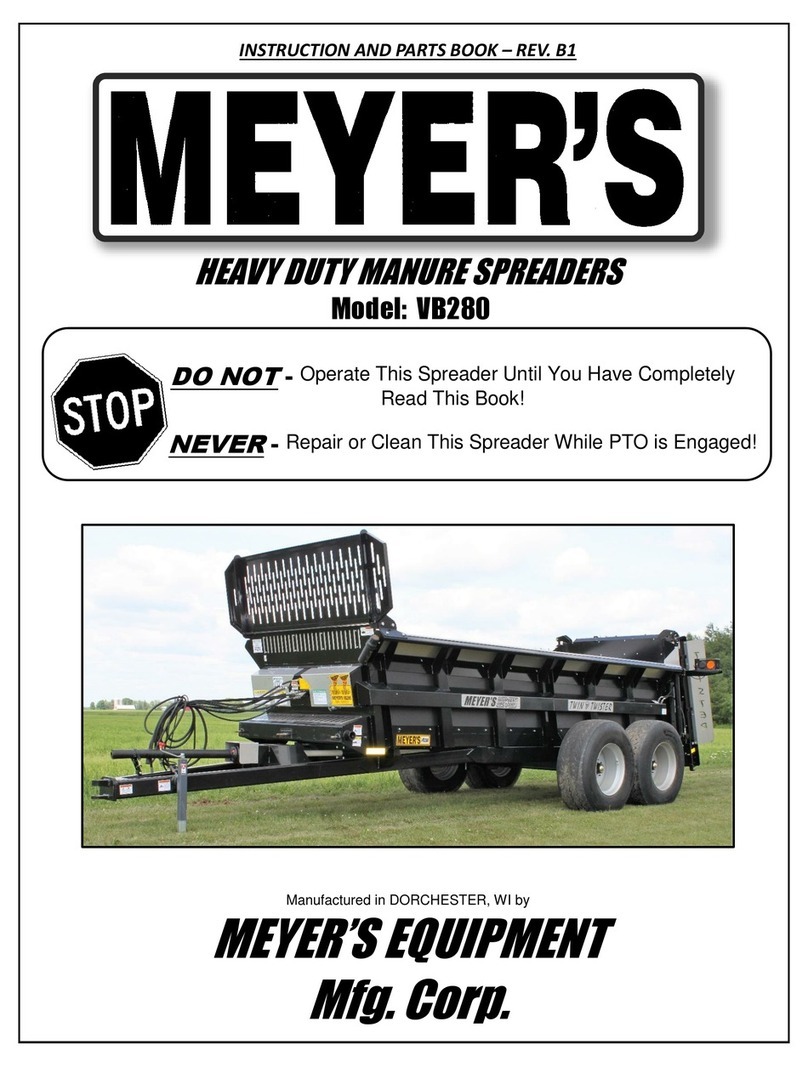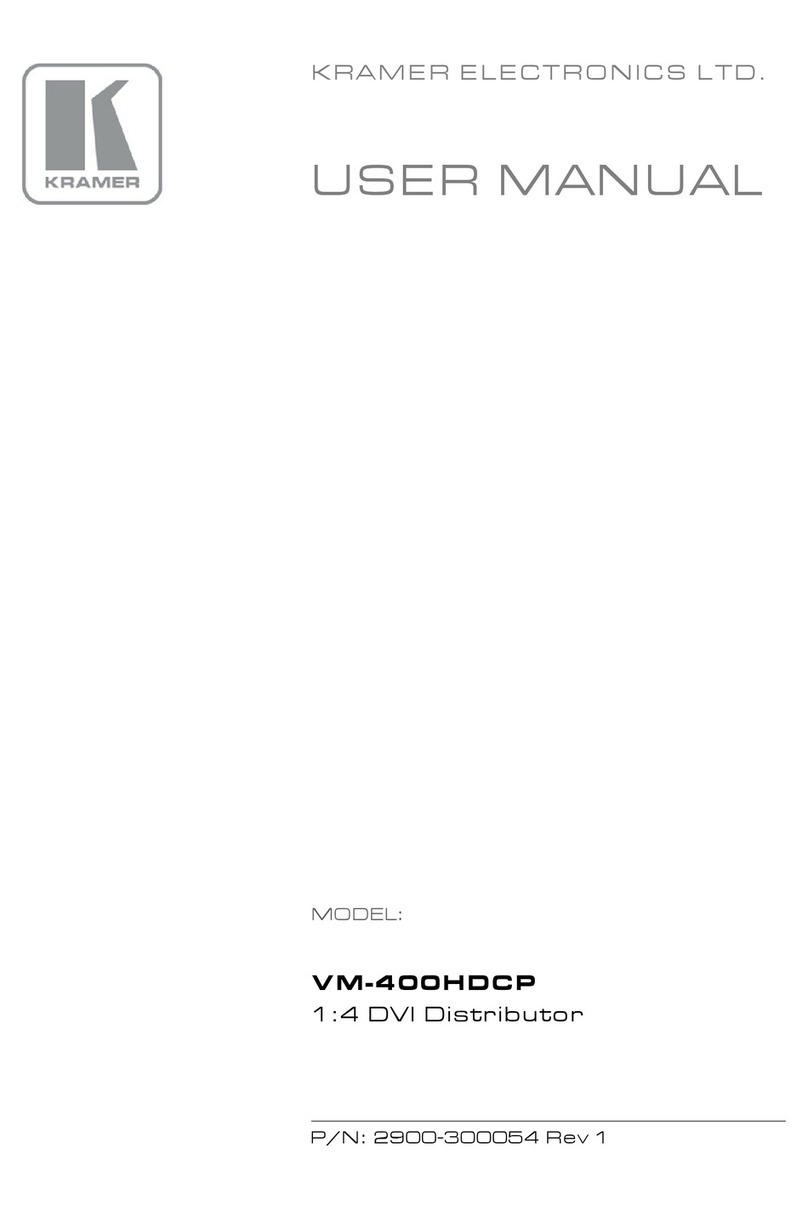
6.4 Adjusting the 3-point mounting
frame IceTiger S 43
6.4.1 Adjusting the 3-point mounting
frame for mounting category 1 43
6.4.2 Adjusting the 3-point mounting
frame for mounting category 2 43
6.5 Coupling the implement 44
6.5.1 Driving the tractor towards the
implement 44
6.5.2 Coupling the hydraulic hose lines 44
6.5.3 Coupling the power supply 46
6.5.4 Coupling the ISOBUS or control
computer 46
6.5.5 Coupling the 3-point mounting frame 47
6.6 Preparing the implement for
operation 47
6.6.1 Installing the rear plug-on rollers in
parking position 47
6.6.2 Installing the rear parking supports
in parking position 48
6.6.3 Calculating the spreading distance 48
6.6.4 Filling the spreading material hopper 49
6.6.5 Filling the brine tank 51
6.6.6 Preparing the spread rate check 54
7Using the implement 55
7.1 Operating the implement with the
EasySet 2 control computer 55
7.2 Operating the implement with a
control terminal 56
8Eliminating faults 57
9Parking the implement 59
9.1 Protecting the implement from
frost damage 59
9.2 Installing the rear plug-on rollers
in parking position 59
9.3 Installing the rear parking
supports in parking position 60
9.4 Uncoupling the 3-point mounting
frame 60
9.5 Driving the tractor away from the
implement 61
9.6 Uncoupling the ISOBUS or
control computer 61
9.7 Uncoupling the power supply 61
9.8 Disconnecting the hydraulic
hose lines 62
10 Repairing the machine 63
10.1 Maintaining the implement 63
10.1.1 Maintenance schedule 63
10.1.2 Checking the top link pin and lower
link pin 63
10.1.3 Checking the hydraulic hose lines 64
10.1.4 Checking the spreading vanes 64
10.2 Cleaning the implement 65
10.3 Eliminating faults 66
10.4 Lubricating the implement 69
10.4.1 Overview of lubrication points 70
10.5 Storing the implement 70
11 Loading the implement 72
11.1 Lifting the implement 72
11.2 Lashing the implement 72
12 Appendix 74
12.1 Other applicable documents 74
13 Directories 75
13.1 Glossary 75
13.2 Index 76
MG6882-EN-GB | F.1 | 09.08.2022 | © AMAZONE
II
